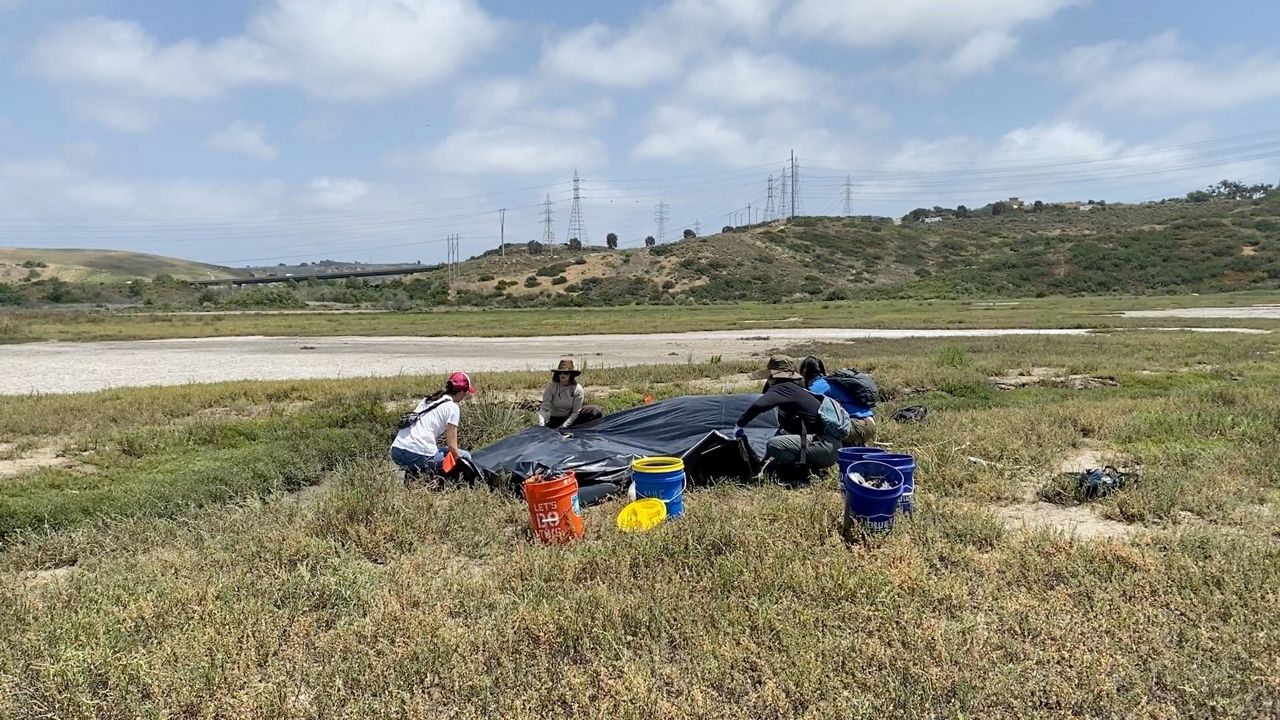SAN DIEGO — Conservation groups are coming together to fight an invasive plant that is threatening California’s wetlands.
Carolyn Lieberman is the Coastal Program coordinator for the U.S. Fish and Wildlife office out of Carlsbad. Along with a volunteer crew from the Agua Hedionda Lagoon Foundation, she is working to eradicate the devastating Algerian sea lavender from taking over the coastal wetland.
“It is pretty," Lieberman said. "No, but I think I hate it,” she joked.
Lieberman said it chokes out important vegetation for the endangered Belding's savannah sparrow.
“This is the nesting habitat for the Belding’s savannah sparrow and the Algerian sea lavender just takes it away," she said. "By having the nonnative sea lavender in here, the native birds and plants that are supposed to be here can’t thrive. And so by removing it, the natives can take ahold again and that can help recover the native plants and animals that have been displaced.”
Lieberman said it is also important foraging habitat for the endangered Light-footed Ridgway’s Rail. She helped test and develop techniques for controlling and removing the sea lavender: tarping with black plastic, hand pulling and scraping. She’s sharing the methods with local organizations who will help her maintain areas up and down California’s coast.

Larissa Fullmer is the director of trails and conservation at the Agua Hedionda Lagoon Foundation. She said ecosystems such as lagoons, wetlands, seagrass beds and salt marshes are power hitters for carbon sequestration and serve as natural solutions to climate change.
“It’s been an amazing partnership working with the U.S. Fish and Wildlife," Fullmer said. "By maintaining our trails and erosion control, removing invasive plants and species, we’re able to restore it to the natural habitat.”
Fullmer said her team will help monitor the growth and removal of the invasive sea lavender, until it is eradicated someday.
“We are giving people the opportunity to get close to nature and also the opportunity to serve their community,” Fullmer said.
Lieberman said having boots on the ground to help their mission of restoring native coastal ecosystems gives her hope for the future.
“This kind of work is not something that I can do by myself," she said. "And so I like working with local nonprofits and helping them build capacity so they can take what the science has shown works and doesn’t work and then they can take it and do it on a larger scale.”
U.S. Fish and Wildlife experts say it is also helpful to plant native plants in your landscape because it will help support local wildlife.



